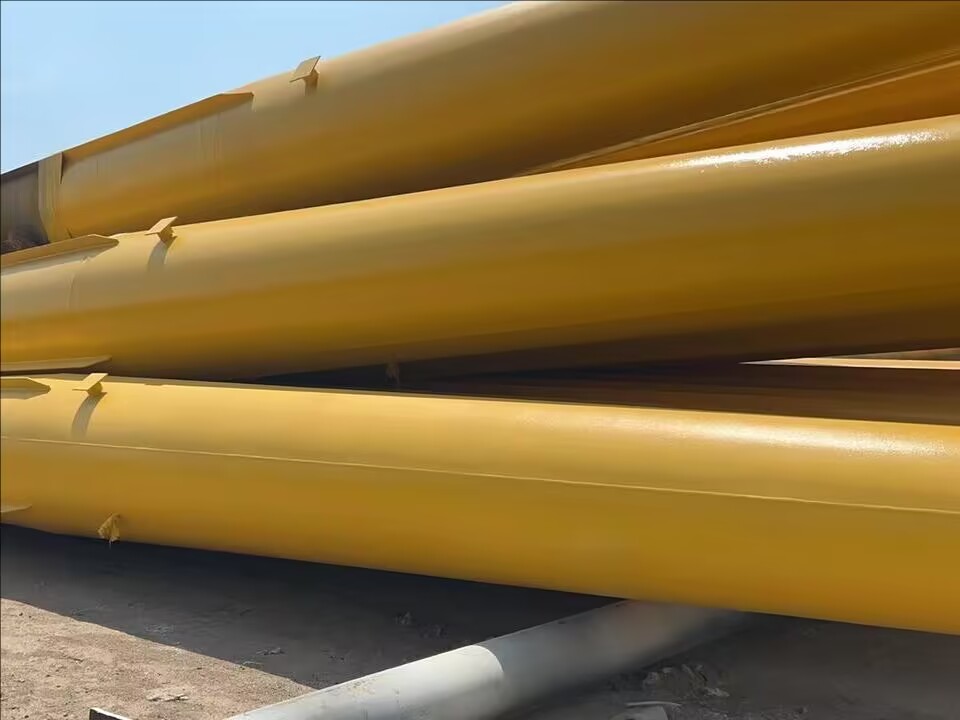There are many factors to consider when selecting the best pipeline for oil and gas applications, the most important of which is the choice of pipeline material. In oil and gas pipelines, commonly used piping materials can be mainly divided into four categories:
carbon steel,
stainless steel, alloy steel, non-metallic materials. Each of these four materials has its own advantages and limitations, as follows:

Carbon steel: Carbon steel is the cheapest and most widely used material, can be used in a variety of piping systems, has the advantages of low cost, adequate supply, is the most affordable piping material. Moreover, carbon steel has the characteristics of high strength and good processing performance, and can be applied to most conventional conveying systems.
Limitations: Susceptibility to corrosion, especially in humid and aggressive media environments, requiring anti-corrosive coatings and cathodic protection.
Stainless steel: Stainless steel has excellent corrosion and oxidation resistance, can operate efficiently under high temperature conditions, and does not react with a variety of chemicals. Suitable for conveying corrosive media and in high temperature and high pressure environment, good health performance, widely used in food, medicine and chemical industry and other areas with high health requirements.
Limitations: Expensive and difficult to weld.
Alloy steel: Alloy steel by adding chromium, molybdenum, vanadium and other alloying elements on the basis of ordinary carbon steel, significantly improve the resistance to high temperature, pressure and creep. High thermal resistance, very suitable for high temperature, high pressure or special media (such as sulfur-containing, acidic media) conveying system.
Limitations: The manufacturing process is complex, the cost is high, and the production process and heat treatment control requirements are strict.
Non-metallic materials: The main types of general non-metallic materials are plastics (such as PVC, CPVC, PE, PPR), composite pipes, ceramic pipes, etc. These materials have the characteristics of light weight, corrosion resistance, easy installation, etc., especially suitable for the transport of corrosive media or in special environments.
Limitations: Lower strength and pressure resistance than metal materials, poor thermal stability, not suitable for high temperature and high pressure occasions.
When selecting the best piping material for oil and gas applications, it is important to conduct a thorough analysis of the specifications, objectives and constraints of the project in order to establish criteria and priorities. It is also helpful to compare the advantages and disadvantages of different materials against these criteria and to assess their performance, risk and cost trade-offs.
In addition, consulting experts, suppliers and contractors can provide valuable feedback and quotes for different materials. In addition, you should review best practices, lessons learned, and case studies from similar projects using different materials in order to learn from their successes and failures.
Finally, using simulations, experiments, and inspections to test and validate your material choice can ensure its suitability, functionality, and quality. By following these steps, you can make informed and optimal decisions that will benefit your project in the long run.
In summary, in the selection of pipeline materials, it is necessary to comprehensively evaluate the performance, risk and economy of each material according to the type of transport medium, temperature, pressure, flow and other working parameters, while considering the external environment (such as soil, groundwater, climate), installation, maintenance costs and compliance with relevant standards (such as API, ASTM, GB/T). Finally make the best choice. Through strict design and reasonable protective measures, it can ensure the long-term, safe and efficient operation of oil and gas pipeline system.
